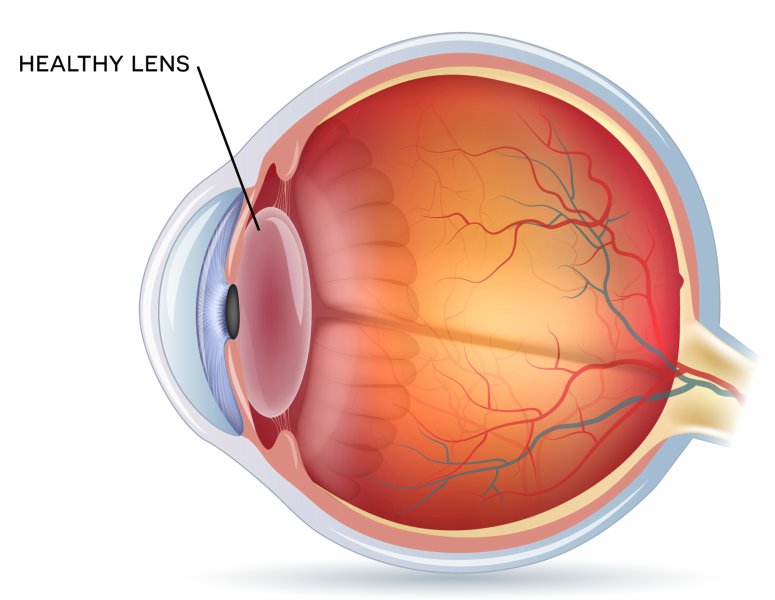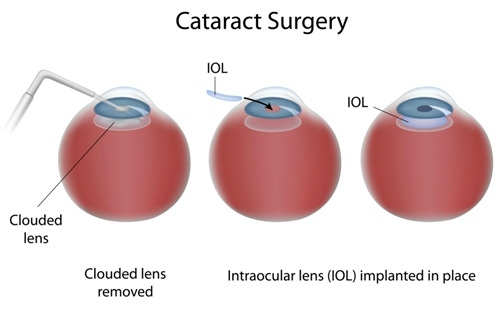Cataract Treatment Perth
What is a Cataract
A cataract is a clouding of your eye’s lens. The clouding usually develops over time and interferes with light entering your eye affecting your ability to see clearly.
If left untreated, cataracts may progress and eventually cause you to go blind. Both eyes may be affected, although not usually to the same extent. The risk of getting cataracts increases with age and may cause the following symptoms to your vision:
-
- Blurriness and ghosting of images
- Glare with sunlight or car headlights
- Difficulty with driving or reading in one or both eyes.


Cataract facts
-
- Cataracts are mainly diagnosed in people over 60 but can occur at any age (some babies may even be born with them).
- Age is the major risk factor for developing cataracts.
- A cataract can also be associated with eye trauma, prolonged use of steroids, previous inflammation and infection in the eye, diabetes and other systemic diseases.
- A cataract starts out small at first and has little effect on your vision.
What Causes Cataracts
The lens inside your eye is mostly made up of water and protein. The lens, focuses light onto the retina for clear vision and adjusts the focus so you can see things clearly up close and further away.
The protein in your eye is arranged in a precise way that keeps the lens clear and lets light pass through it.
As you age, some of the protein may clump together and start to cloud a small area of the lens. This is a cataract, and over time, it may grow larger and cloud more of the lens, making it harder to see.
No one knows for sure why the eye’s lens changes as we age, forming cataracts. But researchers worldwide have identified factors that may cause cataracts including:
-
- Advancing age
- Ultraviolet radiation from sunlight and other sources
- Diabetes
- Smoking
- Prolonged use of corticosteroid medications
- Previous eye injury/surgery or inflammation
- Family history.
Cataract Treatment
At first when cataracts symptoms appear, you may be able to improve your vision for a while using:
-
- New prescription glasses or contact lenses
- Bifocal glasses
- Magnification devices
- Appropriate lighting or;
- Other visual aids.
Cataract surgery
Surgery is an option when your cataracts have progressed enough to impair your vision and affect your daily life. In most cases cataract surgery is a relatively painless procedure that has a high success rate to help regain vision.
Cataract surgery involves replacing the dysfunctional (cloudy) lens with an artificial one. Your surgeon will remove your clouded lens and in most cases replace it with a clear, plastic intraocular lens (IOL).
The surgery usually takes around 10 minutes.

At WA Eye Specialists
Our surgeons will discuss the risks and benefits of cataract surgery in more detail with you during your consultation, including the options of:
-
- Laser assisted cataract surgery
- Zepto micropulse capsulotomy-assisted cataract surgery (www.zepto-cataract.com) and;
- The range of monofocal, toric and multifocal intraocular lenses that can be tailored to your individual needs.
CATARACT SURGERY AND INTRAOCULAR LENS IMPLANTS -OPTIONS OF INTRAOCULAR LENS IMPLANTS
-
- MONOFOCAL/TORIC MONOFOCAL (Distance or Near)
-
- Most common, high satisfaction using both eyes at the same focus.
- Reading glasses post op.
- Better vision in low lights compared to Multifocal Lenses.
-
- MONOVISION
-
- One eye set for Distance and one eye set for intermediate near vision to be spectacle free.
- Success rate 50 to 70%.
- Less haloes, ghosting or glare which can happen with multifocal lenses.
- Adjustment time usually 1-2 weeks, but can be longer for some patients or never hence require glasses for most tasks.
-
- MULTIFOCAL
-
- 95% achieves spectacle free
- Not suitable for some preexisting conditions: Corneal diseases, Glaucoma, Diabetic Maculopathy and Macular Degeneration
- 10% -Haloes, Glare, Ghosting and other night vision disturbance; many patients do adapt after a period of time.
- 5% still require low power reading glasses.
- Can have reduced contrast in low lights such as reading with dim light.
-
- MONOFOCAL/TORIC MONOFOCAL (Distance or Near)
If you have any questions or would like to book an appointment please contact us:
Cataract Treatment Perth
Our specialist eye doctors see patients from all over Perth and rural Western Australia. They have extensive experience in the diagnosis and treatment of a wide range of eye conditions including cataracts. WA Eye Specialists have four practices located in Perth in Armadale, Joondalup, Midland, Murdoch and South Perth.

